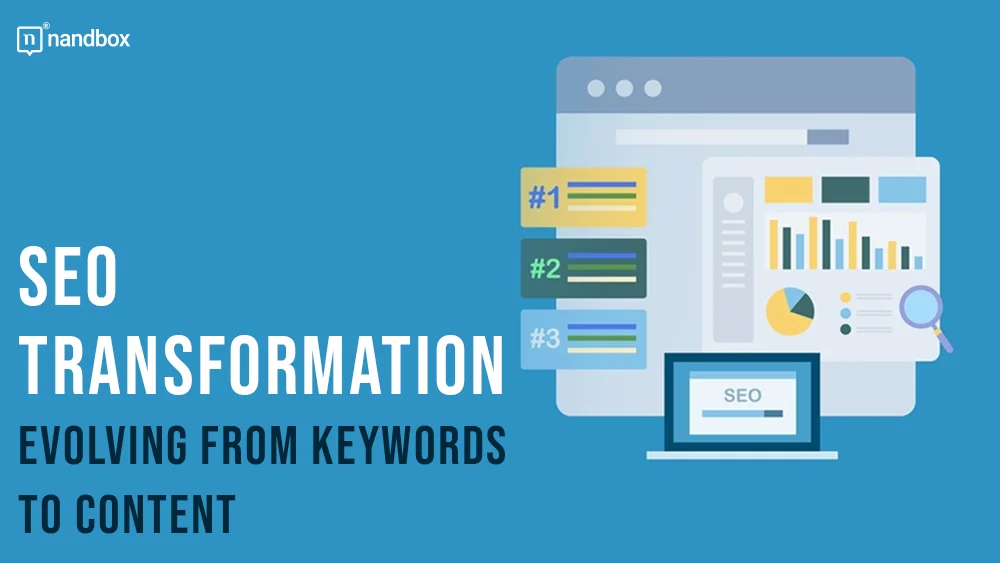SEO has evolved a lot in its existence. SEO transformation is something that we are witnessing in today’s digital era. In the early days of the internet, all that was required to get at the top of the search engine rankings was to fill your website with as many keywords as you could. However, with the improvement of algorithms within search engine relevancy drives now depend not simply on keywords but on a more global concept of qualitative content. These changes are important for the person who wishes to retain some semblance of relevance in today’s climate.
SEO Transformation History: The Early Days of SEO
Keyword Stuffing Era
Initially, in SEO, it centered on keywords solely. How often could one fit a keyword within the content on the website? Keyword stuffing was among the oldest techniques adopted in the SEO manipulation of websites and pages of information. That is why a website’s content would contain the same keyword dozens of times per page. Not to mention the fact that sometimes the websites would hide the text containing this keyword so that a regular user could not see it, but search engines could. The higher the number of times a keyword was implemented, the higher a website was to rank.
This approach proved useful then, as search engines were not intelligent and only focused on the keyword density of the webpage. The consequence was thin content that was not useful to the site visitor but receptive to the search engines.
The Rise of Search Engine Algorithms
As the internet grew, so did the need for more advanced search engine algorithms. Enter Google’s PageRank, a revolutionary algorithm that changed the SEO landscape. PageRank introduced the concept of link analysis, where the quality and quantity of links pointing to a website were used to determine its relevance and authority. This marked the beginning of a new era in SEO, where content quality and relevance began to take precedence over mere keyword density.
As search engines like Google continued to refine their algorithms, the practice of keyword stuffing became less effective and, eventually, a penalized offense. The focus shifted towards creating content that not only included relevant keywords but also provided value to users. This shift laid the foundation for the modern SEO practices we know today. Many Australian businesses, particularly those investing in SEO in Newcastle, have successfully capitalized on this evolution by developing targeted, quality-driven content strategies. As a result, these businesses have seen measurable growth in their online presence, customer engagement, and local market share, clearly demonstrating the value of adapting to contemporary SEO methods.
SEO Transformation: The Shift from Keywords to Content
Content as King
The early 2010s marked a significant turning point in SEO. Google rolled out a series of updates Panda, Penguin, and Hummingbird, that collectively emphasized the importance of high-quality, relevant content. Panda focused on content quality, penalizing sites with thin or duplicate content. Penguin-targeted websites engaged in manipulative link-building practices. While Hummingbird introduced the concept of semantic search, which aimed to understand the intent behind a user’s search query rather than just matching keywords.
These updates underscored the need for content that is not only relevant but also informative, engaging, and aligned with user intent. Today, SEO is less about cramming in as many keywords as possible and more about understanding what users are searching for and providing them with content that meets their needs. This shift has also given rise to the concept of content relevance and semantic search, where the context of a keyword within the content is just as important as the keyword itself.
For those looking to dive deeper into the technical aspects of modern SEO practices, a technical SEO guide can provide valuable insights into optimizing a website’s structure, performance, and user experience, all of which contribute to better search engine rankings.
User Experience and Engagement
With a shift of focus to content, other aspects of usability came under focus. To be exact, they came more comprehensively under the User Experience (UX) category. In 2010, online search engines began to favor certain sites. Ones that provided users with a good experience. Key considerations were loading a site’s speed, design for mobile accessibility, and readability of the methods of presented information. Increased user engagement, which is a result of improved structuring and quality of content, was also inevitable. Additionally, it contributed to search engine rankings.
For example, highly coherent content whose organization and layout ensure that users stay engaged. The user will potentially spend more time on the website if it’s optimized for mobile viewing. This cuts down bounce rates as well as extends the time that users spend on the site; both are good signs to send to the search engines that the content is indeed valuable and relevant. Conversely, sites that have messy and confusing layouts, or sites that are not well-organized, tend to have high bounce rates, which pose a threat to the sites’ rankings on search engines. Therefore, the assumption of modern SEO is not just to bring users to the site but also to retain them, hence ensuring they’re fully engaged.
SEO Transformation: The Role of Modern SEO Practices
The Integration of Multimedia Content
Another significant evolution in SEO is the growing importance of multimedia content. While text-based content is still crucial, incorporating images, videos, infographics, and other forms of multimedia can greatly enhance user engagement and, by extension, SEO performance. Multimedia content not only makes a webpage more visually appealing but also helps break down complex information into digestible formats.
Search engines recognize the value of multimedia content and often rank pages that include a variety of content types. However, it’s important to optimize these elements properly. That is, by using relevant alt text, captions, and file names. As well as ensuring that they load quickly and are mobile-friendly. When done correctly, multimedia content can significantly contribute to a better user experience and improved search engine rankings.
Voice Search and AI-Driven SEO
Other important factors that contributed to the SEO transformation are voice search and artificial intelligence (AI). Most notably, technologies such as voice search. This tech has shifted the ways that people engage with a search into a whole new ball game. While once the search was full of short phrases, using only keywords, now people come up with questions as if they are speaking. This shift has shifted the focus to long-tail keywords together with natural language processing in the strategies of SEO.
On the other hand, while using intelligence in search engines, AI helps in understanding the exact intention of the user and provides a precise result. RankBrain is a machine learning algorithm that works based on learning from people and tries to deliver better search results. What this means is that there lies the necessity of enhancing content’s relevance, quality, and orientation towards the current types of search.
To fine-tune the search in voice assistants and rank in AI algorithms, you must understand the user’s intention and know how to write for a voice assistant.
Conclusion
The change in focus from keyword-based SEO solutions to content-based is unmatched. It is a result of the enhancement of the algorithms of search engines and the relevance of user experience. Currently, it is not enough to optimize a site for keywords. It requires the production of quality content that will interest consumers. Thus, keeping up with the current SEO trends means that businesses are on the right track. It enhances the ranking of their site on the search engine, and subsequently, they can attract more traffic to the site.
It therefore means that SEO is bound to change as the digital infrastructure develops further. The brief that was done serves to show how far SEO has come. Moreover, where it is headed to ensure that businesses can position themselves appropriately for greater effectiveness in this dynamic field.





